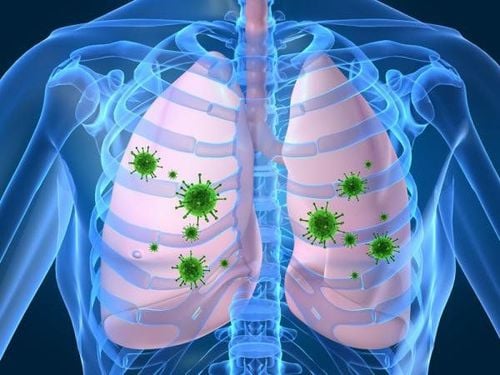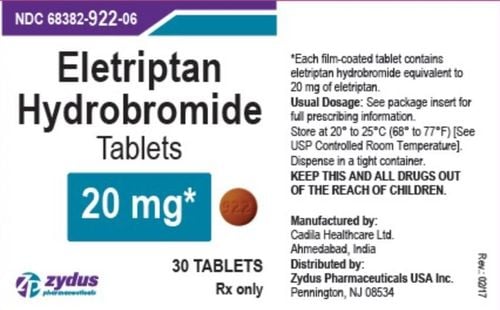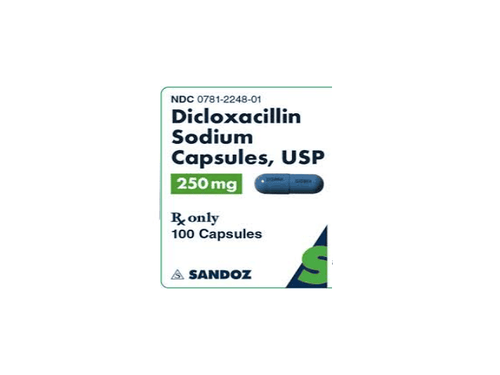This is an automatically translated article.
When there is a problem with the lungs, it is difficult for the body to receive the full amount of oxygen it needs. There are many diseases that can affect the lungs and affect lung function. Below are diseases related to the lungs.
1. Acute bronchitis There are hundreds of viruses that can cause the common cold. In most cases when you get a virus, the virus attacks your nose and throat. Causes symptoms such as stuffy nose, runny nose, sore throat... But sometimes some common cold triggers can also penetrate deep into the respiratory tract and cause acute bronchitis. . This inflammation causes the bronchial tubes (air passages in the lungs) to swell and produce more mucus, which can lead to a severe cough, a productive cough, and chest discomfort. Acute bronchitis usually resolves on its own within a few weeks with care measures such as keeping the body warm, using symptomatic medications.
2. Bronchial asthma Asthma is an overreaction of the respiratory lining to a certain allergen and this is also a lung-related disease. This condition also causes airway swelling and increased mucus production in the lungs. Asthma is a chronic condition that can be lifelong rather than a temporary condition caused by an infection. If you have asthma, lung capacity may be lower because edema and mucus restrict the movement of air in the lungs. During an asthma attack, the airways narrow, which can cause wheezing, stridor, shortness of breath, and can become dangerous.
Asthma usually responds well to bronchodilators and if well controlled can limit the development of asthma attacks.
3. Allergies Allergies to triggers like pollen, house dust, and pets usually don't affect the lungs. But allergies and asthma often go hand in hand. If both of these conditions are present, exposure to an allergen such as pollen can trigger an asthma attack.

Bệnh hen phế quản ảnh hưởng đến phổi
4. Anaphylaxis Anaphylaxis is the most severe type of allergic reaction also known as a hypersensitivity reaction and anaphylaxis definitely affects the lungs. Anaphylaxis is most likely to occur when people with severe allergies to foods, insect stings, drugs, etc. come into contact with those allergens. The body in shock causes the airways to constrict and the throat can become so swollen that it can't get enough air through. Anaphylaxis is a life-threatening medical emergency, so immediate medical attention is required.
5. Chronic Obstructive Pulmonary Disease (COPD) COPD is a general term that includes chronic bronchitis and emphysema. It is common in people who have smoked for a long time and this is one of the lung diseases that cause quite serious symptoms. Most people with COPD have some symptoms of both chronic bronchitis and emphysema. Bronchitis is inflammation in the bronchial tubes in the lungs. Emphysema occurs when the small air sacs in the lungs, called the alveoli, are destroyed. Because so much tissue is damaged, there won't be enough oxygen from the lungs to enter the bloodstream.
6. Flu Cold is a disease caused by a virus, when entering the body through the respiratory tract can cause symptoms including fever, runny nose, body aches and dry cough. The virus that causes influenza can infect the epithelial cells of the respiratory tract and begin to multiply in the lung tissue. That causes the body's immune cells to fight to get rid of the virus, causing the immune system to weaken. Therefore, the flu can also harm the lungs because it makes the lungs more susceptible to other infections that cause pneumonia.
7. Pneumonia Pneumonia can occur after infection with some viruses such as viruses that cause colds, measles...or pneumonia outbreaks, all of which affect the lobes or airways (bronchi). of the lung. This condition can be caused by bacteria, fungi, or viruses, which fill the air sacs (alveoli) with fluid and pus, making oxygen exchange difficult. People with pneumonia often cough up sputum, often thick sputum, shortness of breath, shortness of breath and chest pain.
8. COVID-19 COVID-19 is a newly discovered virus, it has been causing a pandemic affecting the whole world and Covid-19 can damage the lungs. Just like the flu, some people infected with coronavirus may develop symptoms of upper respiratory tract infection such as low-grade fever, cough, sore throat, runny nose, loss of smell, etc., and may also develop inflammation afterwards. lung as a complication. In that case, the alveoli will be filled with fluid, making it difficult for the patient to breathe, not having enough oxygen for the body's activities. For some people, the pneumonia associated with COVID-19 becomes so severe that it leads to acute respiratory distress syndrome (ARDS). This is a condition caused by damage to lung tissue. People with ARDS have a hard time breathing and may need to be put on a ventilator.
9. Tuberculosis This is a disease caused by tuberculosis bacteria, which can be transmitted through the respiratory tract. After entering the body, if it passes through the body's protective barrier, the specific bacteria reach the alveoli in the lungs and cause pulmonary tuberculosis. Some carriers of the bacteria do not know they have it and it causes no symptoms, but these people often develop the disease when the body's resistance declines. Still others develop severe symptoms and severe lung damage. The treatment of TB requires a combination regimen of many different antibiotics and a long treatment time, especially with drug-resistant TB, the treatment regimen needs a very long time.

COVID-19 có thể gây hại cho phổi
10. Cystic Fibrosis Cystic fibrosis is caused by an inherited, defective gene. In people with this condition, the cells that make mucus, sweat, and digestive juices become thick and sticky instead of thin and slippery. This clogs the airways in the body, including the airways in the lungs, thereby affecting the lungs. People with this condition often cough up mucus, wheeze, and often develop lung infections.
11. Lung cancer Lung cancer is one of the most serious lung-related diseases, it develops when cells in the lungs grow abnormally and clump together into a tumor. As tumors grow, they destroy the healthy tissue around them. If a tumor in your lung becomes large enough, it can lead to blocking your airways and making it harder for you to breathe. Cancer can also have a secondary cause and start in other parts of the body and spread to the lungs but it is not called lung cancer. For example, breast cancer that has spread to the lungs is still breast cancer.
12. Interstitial lung disease (pulmonary fibrosis) This includes many of these chronic disorders that cause inflammation and fibrosis in the lungs. The accumulation of scar tissue destroys the alveoli and capillaries in the lungs, making it difficult for you to get an adequate supply of oxygen. Eventually, as this fibrous tissue increases, the lungs stiffen and become increasingly difficult to breathe.
13. Cardiovascular disease The lungs and heart are closely related activities, so when one is sick, the other is often affected. Certain heart problems can lead to pulmonary hypertension, a type of high blood pressure in the pulmonary arteries and the right side of the heart. Over time, the blood vessels in the lungs narrow, making it harder for blood to flow. In other cases, people with heart problems such as heart failure develop acute pulmonary edema, a condition in which fluid builds up in the air sacs in the lungs, causing acute difficulty breathing.
The above are common lung-related diseases and affect lung function. Some diseases caused by microorganisms can be avoided by limiting exposure to pathogens, and some diseases are difficult to prevent and need to be detected and treated early.
Lung diseases leave dangerous complications that greatly affect human health as well as the respiratory system. However, if examined and treated at an early stage, the treatment of lung diseases will become much simpler. Therefore, health experts often recommend that we go for a general health checkup every 6 months to detect possible disease risks early.
Currently, Vinmec International General Hospital has general health checkup packages suitable for each age, gender and individual needs of customers with a reasonable price policy. Accordingly, the patient's examination results will be returned to their home. After receiving the results of the general health examination, if you detect diseases that require intensive examination and treatment, you can use services from other specialties at the Hospital with quality treatment and services. outstanding customer service.
Please dial HOTLINE for more information or register for an appointment HERE. Download MyVinmec app to make appointments faster and to manage your bookings easily.
Reference source: webmd.com













